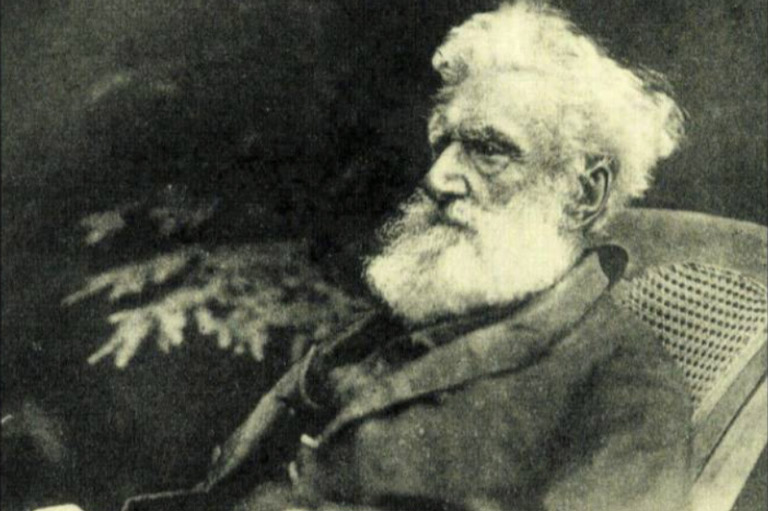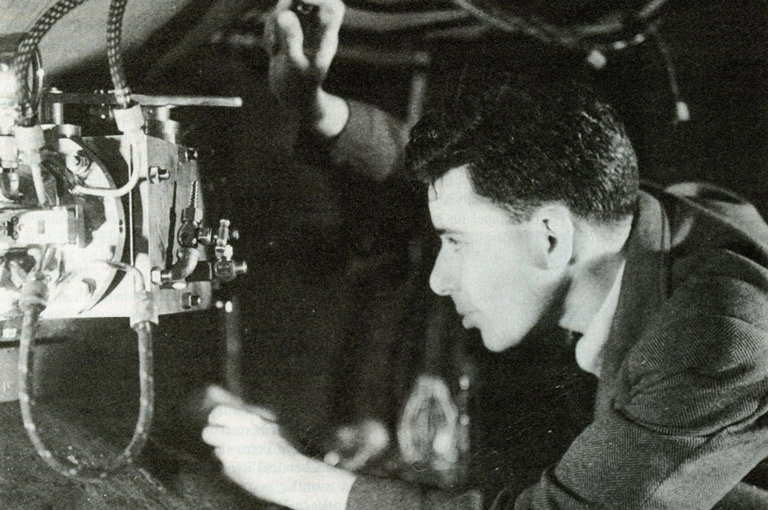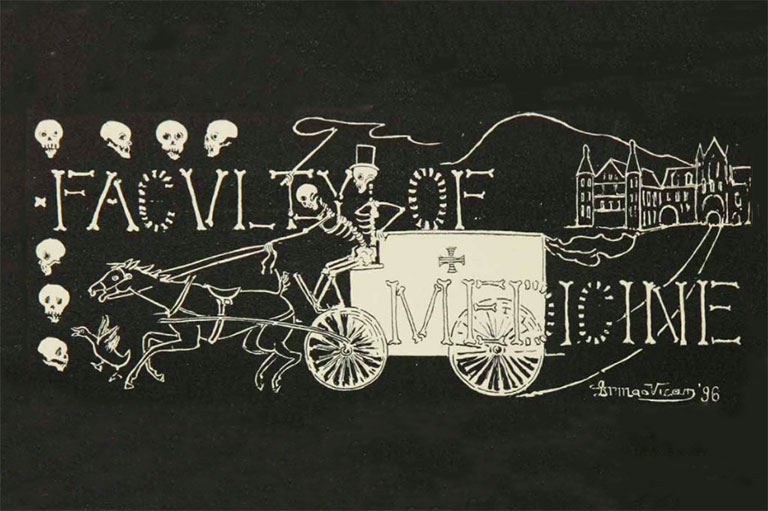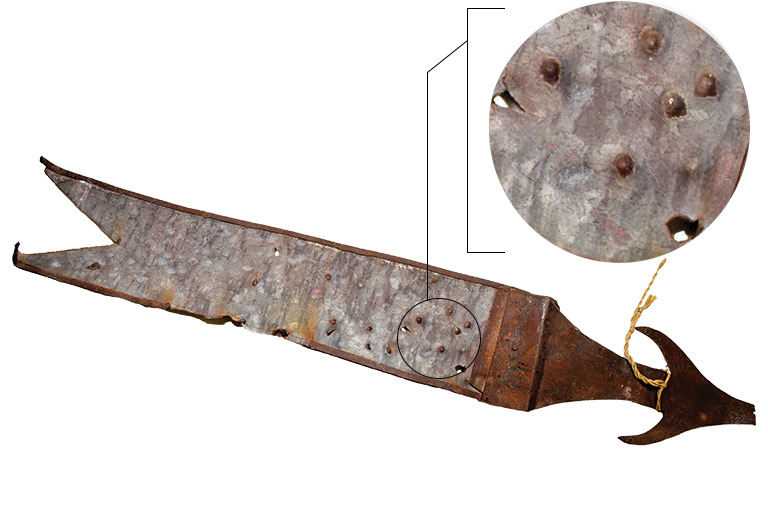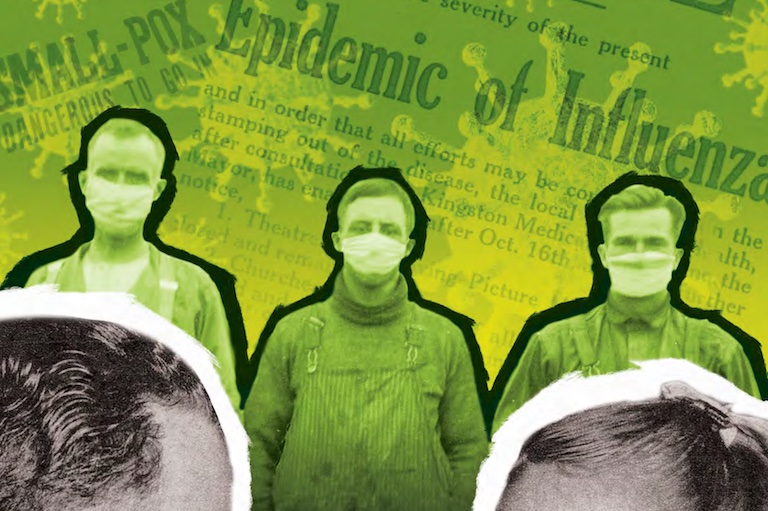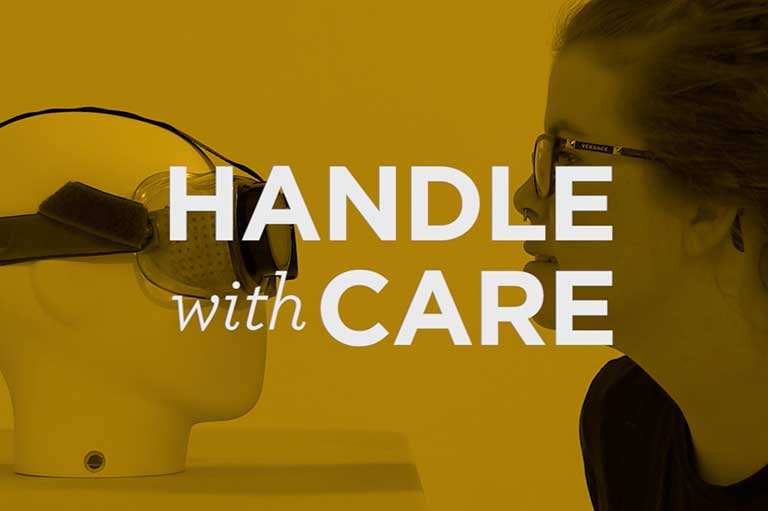Discover a wealth of interesting, entertaining and informative stories in each issue, delivered to you six times per year.
Isolation
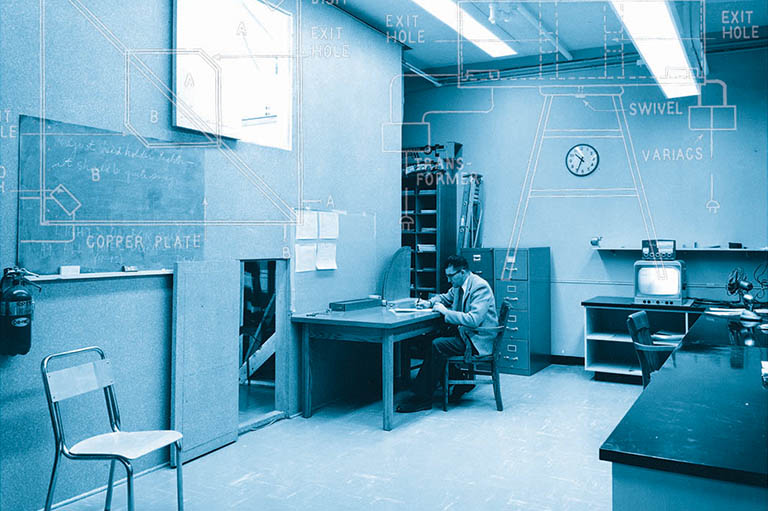
No research into torture or such subjects as sensory deprivation should be undertaken without consideration of the motives of the sponsoring organization or individual, so that at least some estimate can be made of the eventual use to which the results of the work will be put.
— Amnesty International Report on Torture, 1975.
It was a cool summer morning in August of 1974 when Donald Capri drove over Winnipeg’s Redwood Bridge and noticed something unusual floating in the Red River below. He called police, and within minutes officials made the grisly discovery of a male body. There were no marks of violence, and nothing to suggest foul play. Police recovered a black case with eight keys, a gold Omega watch, and enough identification to determine that the man was forty-nine-year-old John Zubek, a research professor in psychology at the University of Manitoba. Zubek had been reported missing three days earlier from his downtown apartment. The medical examiner came to a speedy conclusion: suicide by drowning.
John Peter Zubek’s tragic death shocked his family and colleagues. He was a brilliant researcher who had earned his doctorate at twenty-five and became head of the University of Manitoba’s psychology department at twenty-eight. Almost single-handedly, he built the department’s international reputation, bringing in more than half a million dollars in research grants and authoring six books and scores of scholarly papers. His credentials in the world edition ofWho’s Who in Science showed that he was a major international researcher.
”He was at the forefront of his field, a world-renowned figure,” says professor Todd Mondor, current head of the psychology department at the university.
But close examination of his field clouds his legacy. Zubek was a world leader in sensory isolation, a murky area of human experimentation that had its origins in Cold War hysteria and Central Intelligence Agency involvement in Canada.
For fifteen years, Zubek conducted experiments on more than five hundred volunteers at his isolation laboratory. He plunged some people into darkness and silence for up to two weeks; he immobilized others in a coffin-like box. He asked students to lie quietly in a translucent Plexiglass dome while he subjected them to constant light and white noise. All the while, he tested his subjects for behavioural, cognitive, and psychological effects.
“It was horrible, really uncomfortable,” recalled one of his research subjects.
Only after Zubek’s death did the full extent of CIA involvement in human experimentation and mind control across North America become known. Foreign military and intelligence agencies were intensely interested in sensory isolation and deprivation research. A generation later, the lessons of this field of work can be seen in interrogation methods at Guantanamo Bay, Abu Ghraib, and other detention centres.
Article continues below...
Listen to interview with Cecil Rosner
Secret meeting in Montreal
Zubek was born in Trnovec, Czechoslovakia, in 1925 and came to Canada five years later. He grew up in Grand Forks, B.C., and graduated with first-class honours in psychology at the University of British Columbia. Over the next four years, he rose meteorically in the academic world, earning his master’s degree in social psychology at the University of Toronto, followed by a Ph.D. in physiological psychology at Johns Hopkins University. In 1950, just after his twenty-fifth birthday he was appointed assistant professor of psychology at McGill.
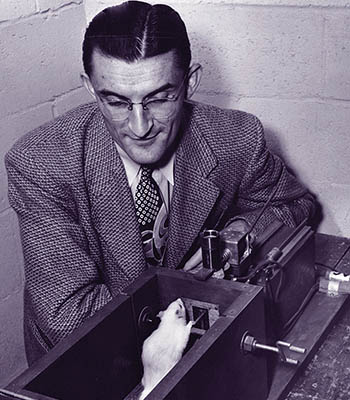
His earliest research interests were in the field of somesthesia, the study of sensory systems and perceptions associated with the body.
Zubek experimented with rats, blinding them and then determining their capacity to distinguish between rough and smooth surfaces, as well as differences in temperatures. He did similar tests with cats, building small boxes and tempting cats with liver treats so that they would lift the lids of the boxes in order to get the food. Floorboards with rough and smooth surfaces were in front of each box.
Zubek first subjected the cats to peripheral blinding by sectioning their optic nerves; then more invasive surgeries were performed to discover which areas of the brain were responsible for the results.
The research started Zubek on the road to a successful scholarly publishing career.
Though he didn’t realize it at the time, covert machinations were taking place in Montreal that would have a profound effect on the future direction of Zubek’s work.
Though he didn’t realize it at the time, covert machinations were taking place in Montreal that would have a profound effect on the future direction of Zubek’s work.
Donald Hebb, the head of Zubek’s psychology department at McGill, was invited to a secret meeting at the Ritz-Carlton Hotel in Montreal on June 1, 1951. The topic of the high-level gathering of defence and research experts from Canada, the U.S., and Britain was brainwashing. At the height of the Cold War, Anglo-American intelligence agencies were convinced that the Soviets and the Chinese had discovered new ways of controlling human behaviour and encouraging people to provide false confessions.
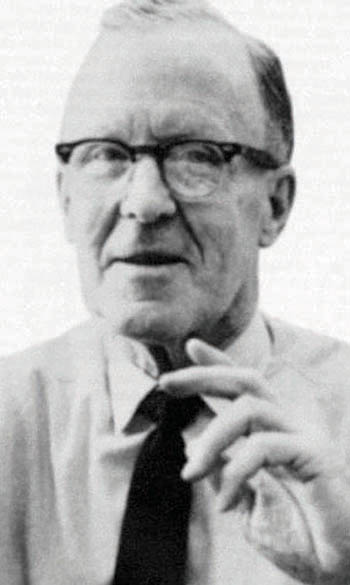
“We did not know what the Russian procedures were, but it seemed that they were producing some peculiar changes of attitude,” Hebb said later. “How? One possible factor was perceptual isolation, and we concentrated on that.”
Hebb offered to do sensory deprivation research at McGill. Everyone at the meeting agreed this was a good idea, including researcher Caryl Haskins and Commander R.J. Williams, official representatives of the Central Intelligence Agency.
Three months later, Hebb received a secret grant from the Canadian Defence Research Board called X-38. Using student volunteers, he placed subjects in a small cubicle and had them wear translucent goggles over their eyes and tubing on their arms while subjecting them to the constant hum of a fan.
It was perceptual rather than sensory deprivation, but his results were dramatic.
Students reported hallucinations, delusions, increased susceptibility to persuasion, and impaired cognitive performance.
Copies of his research were sent to all three branches of the U.S. military, as well as the CIA, and money continued to flow for further research.
When news stories about the unusual research began to leak in early 1954, defence officials concocted a cover story claiming that it was designed to understand how people responded to monotonous and boring work tasks. The true purpose of the research wasn’t revealed until 1956, when testimony at a U.S. congressional hearing explained the reasons for the testing. It would take another thirty years before the CIA’s involvement would become public.
By the early 1950s, the CIA was embarking on what historian Alfred McCoy has called “a veritable Manhattan Project of the mind.” Through operations variously known as Bluebird, Artichoke, MKUltra, and by other names, the agency was exploring every known method of controlling minds. Virtually no details of these projects were ever made public until the 1970s, when a torrent of exposures emerged from congressional hearings and freedom of information requests.
”The Central Intelligence Agency conducted a fourteen-year program to find ways to control human behaviour through the use of chemical, biological, and radiological material,” the New York Times reported on July 21, 1977.
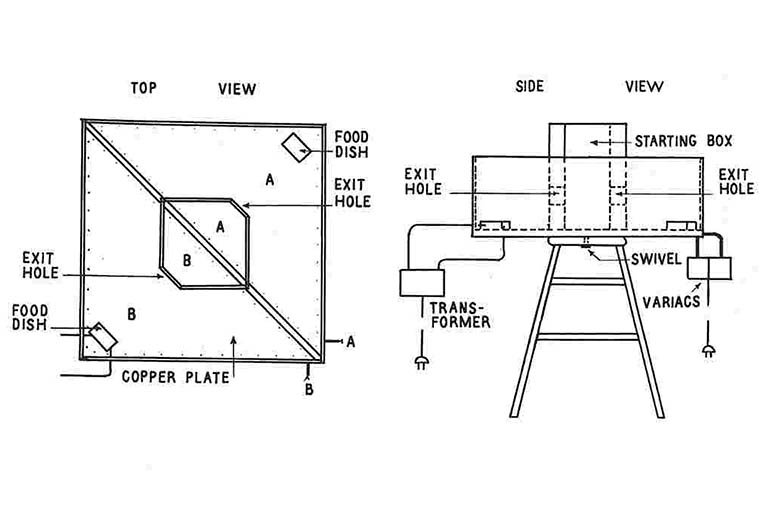
What followed were lurid details of experiments with LSD, electric shock, hypnosis, sensory deprivation, and psychic driving (being continuously exposed to repeated audio messages). Front organizations were set up to provide money to researchers, universities, and institutions. As Admiral Stansfield Turner, CIA director in the late 1970s, eventually revealed: “Most of the people and institutions involved are not aware of agency sponsorship.”
Intrigued by brainwashing
By 1953, Zubek was on his way to the University of Manitoba. As the newly hired head of the psychology department, he was being asked to clean up a history of administrative problems and put the department on the map from a research standpoint — a tall order for a twenty-eight-year-old. To succeed, Zubek knew he had to convince granting agencies to fund projects at the university. He had been inspired by Hebb’s isolation experiments, and the prospect of progressing from animal to human experimentation excited his imagination. Burned by press exposures of its X-38 project, the federal government cancelled funding for Hebb’s research in 1954. Zubek knew it would be expensive, but he set out to make Manitoba the new Canadian centre for sensory deprivation research.
Though he would later deny being directly involved with Hebb’s original research, recently discovered documents among Zubek’s papers tell a different story. In a handwritten note for a speech, Zubek describes how the federal government was intrigued by issues surrounding brainwashing and “asked several of us at McGill, I was on the staff there at the time, if we would care to embark upon such a study, of course with all the financial resources that we might require. Naturally we jumped at the chance. The reason for including me was largely because of my training in both psychology and physiology, having a doctorate degree in both. This research was classified as top secret for several years.”

Zubek described the McGill recruitment process in detail: “In securing our subjects we made use of the university placement service and told the people there that we would pay any student twenty dollars a day, plus all the food he could eat, just for lying on a comfortable bed and doing nothing, and that we would continue to pay them this sum for as long as they would continue to lead this kind of happy existence for us. Well, when word of this got around you can imagine what happened. Students began quitting their summer jobs, the university switchboard was jammed, long lineups began to form in front of our building.”
At the University of Manitoba, Zubek realized his dream of building a sensory deprivation laboratory in 1959 when the Defence Research Board, the original funder of Hebb’s work, approved the first of fifteen years’ worth of grants that would eventually total $275,000. He constructed a futuristic, translucent Plexiglas dome housed in a semi-soundproofed chamber. It was completely self-contained and could accommodate experiments of constant darkness and silence or constant light and white noise.
Microphones and a closed-circuit television system allowed for monitoring, and an escape button was provided to subjects who panicked. Zubek himself was the first test subject, enduring ten days of darkness and silence. He described hallucinations, loss of motivation, feelings of euphoria, and an inability to concentrate on intellectual activity The next year, Zubek followed up by spending nearly fifteen days in the chamber in a perceptual deprivation experiment. Local newspapers couldn’t get enough of the story, describing the chamber as a space prison.
Dozens of student volunteers began enlisting in sensory isolation experiments. Many projects required volunteers not to shave or change their clothes, not to walk about, sit up, sing, whistle, or engage in any other activity to relieve boredom. Monitors were told to make sure volunteers didn’t ever know what time it was, and to enforce a monotonous diet. Zubek’s subjects were sworn to secrecy about their experiences.
Even though there had been a number of sensory deprivation tests across the U.S. since Hebb’s first work, no one had ventured to try the length of confinement that Zubek employed —up to two weeks.
For instance, Maitland Baldwin, an American neurosurgeon who had studied under Hebb, once placed an army volunteer in an isolation box for forty hours with disastrous consequences for the man’s mental health. Baldwin, who worked at the National Institute of Mental Health in the U.S., concluded that anything more than six days of sensory deprivation would “almost certainly cause irreparable damage.” There has never been a documented case of serious adverse reactions among Zubek’s volunteers.
Zubek’s subjects were paid from $100 to $125 per week — not an inconsiderable sum for university students in those days. Yet about a third of all volunteers pulled out before the tests were over, usually before the third day.
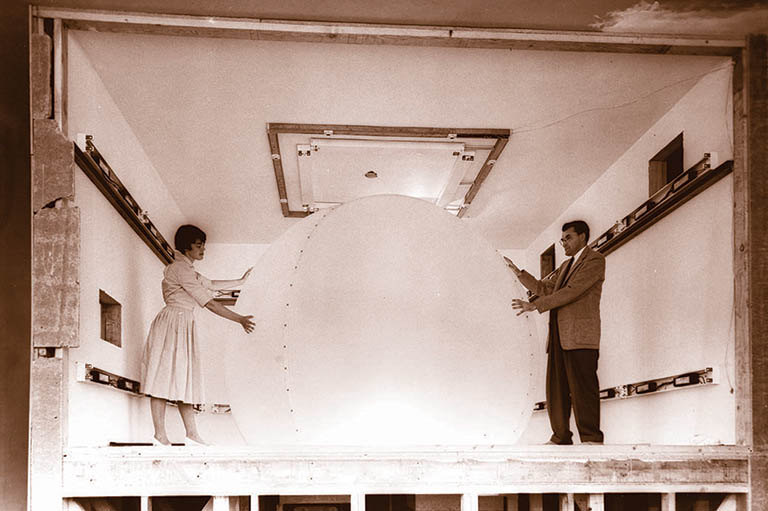
“Horrible, really uncomfortable”
Zubek and his colleagues began publishing results of the tests by the early 1960s. While they were unable to duplicate the dramatic McGill experiences, they noted widespread cognitive and perceptual-motor deficits in the volunteers. People spending fourteen days in isolation continued to have abnormal EEG (brain wave) readings ten days after emerging from the dome. Though the results varied, they also found confinement had produced instances of hallucinations, extreme worry and anxiety in the subjects. By adjusting variables, they discovered what contributed to the ill effects and what alleviated them. Exercise, for instance, was shown to counteract the damages caused by perceptual deprivation.
”We would like to have them stay in longer but we are running risks,” Zubek told the media in 1960. “We are pushing into unexplored territory. These are very drastic conditions.” Though they were happy with the publishing success and research dollars Zubek was attracting, university officials were worried about his next idea: building a coffin-like box to immobilize people for long stretches.
One university dean suggested no first- or second-year students be used for the immobilization experiments for fear of liability and lawsuits, an idea Zubek rejected. Another administrator, Dr. George C. Sisler, the chair of the university’s psychiatry department, expressed graver fears. “The immobilization can be expected to result in an increased incidence of psychotic ideation and sensory experiences —hallucinations, delusions, disorientation, etc. The possibility of individuals predisposed to psychotic illness having some continuing reaction to this experience is thereby increased.” In a memo to Zubek, Sisler suggested using armed forces personnel for the tests, which Zubek occasionally did. “Originally we expected to keep people completely immobile for long stretches and we started out asking for volunteers to remain in this state for twenty-four hours at a time,” he told the Winnipeg Free Press. But few could endure being completely immobile for more than twelve hours.
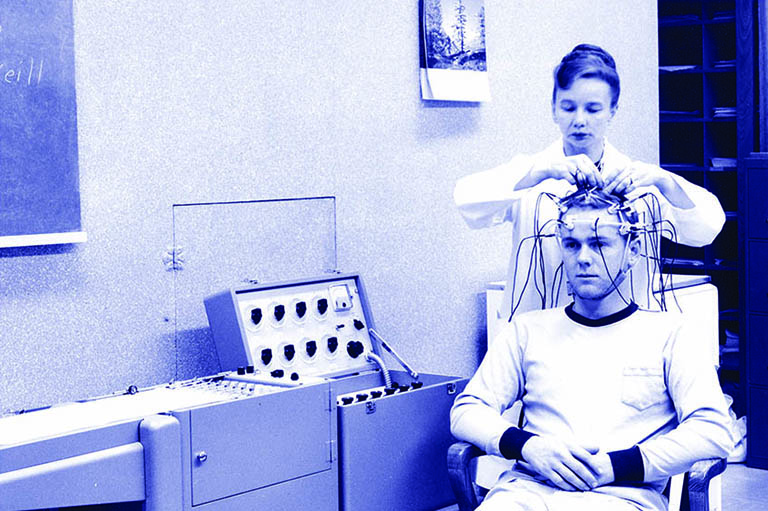
Psychology major Gordon Winocur, attracted to what he called Zubek’s dynamic and captivating lecturing style, became a research assistant and one of the coffin’s first guinea pigs. As he lay in the box, his arms were secured to his sides, his legs were strapped down, and his head encased on three sides by an immobilizing contraption. “I think I lasted about an hour and a half,” recalls Winocur, now the senior scientist at the Rotman Research Institute and professor of psychology at Trent University and the University of Toronto. “It was horrible, really uncomfortable. If you have any latent claustrophobia, it’s going to come out.”
Zubek had a strict and disciplined approach to the research and demanded loyalty from his team of assistants. Winocur fell out of favour with Zubek when he declined his mentor’s proposal to do a master’s thesis in isolation work. “He went berserk, throwing me out of the office and threatening to throw me out of the department,” said Wincour.
Few questioned the purpose of the experiments. Reporters were told that the results would help astronauts cope with isolating conditions in space, but there is no evidence the research was ever intended for that purpose.
”As a young, impressionable graduate student, I didn’t question it in the early stages,” says Wincour.”We were encouraged to think this was groundbreaking research. As I became more sophisticated and talked to more people, I realized there was relatively little of theoretical interest attached to it. The major question was how well people reacted to this kind of treatment and what kinds of changes there were in perceptual and cognitive functions, things that might be useful in developing interrogation techniques. I began to realize there was a different agenda.”
Whether Zubek had any overt agenda other than basic research is unknown, but his findings were attracting attention in many quarters. Thomas Myers, at the U.S. Army Leadership Human Research Unit in California, wrote to say he felt a strong research kinship with Zubek and invited him to visit. The U.S. Army Chemical Research and Development laboratories in Maryland also wrote to Zubek asking for further information. The Naval Medical Research Institute in Bethesda, Maryland, invited him to visit and brief its members on his research, which he did. By 1964, Zubek had convinced the U.S. National Institute of Mental Health to provide him more than $90,000 in funding over three years for his ongoing isolation work.
All of the research was published, and it was avidly read by agencies interested in more than pure experimentation. Decades later, when the CIA’s Kubark Counterintelligence Interrogation manual of 1963 was made public through a freedom of information request, it became clear just how interested U.S. intelligence was in sensory deprivation. “The more completely the place of confinement eliminates sensory stimuli,” the manual says, “the more rapidly and deeply will the interrogatee be affected. Results produced only after weeks or months of imprisonment in an ordinary cell can be duplicated in hours or days in a cell which has no light ... which is soundproofed, in which odors are eliminated, etc.”
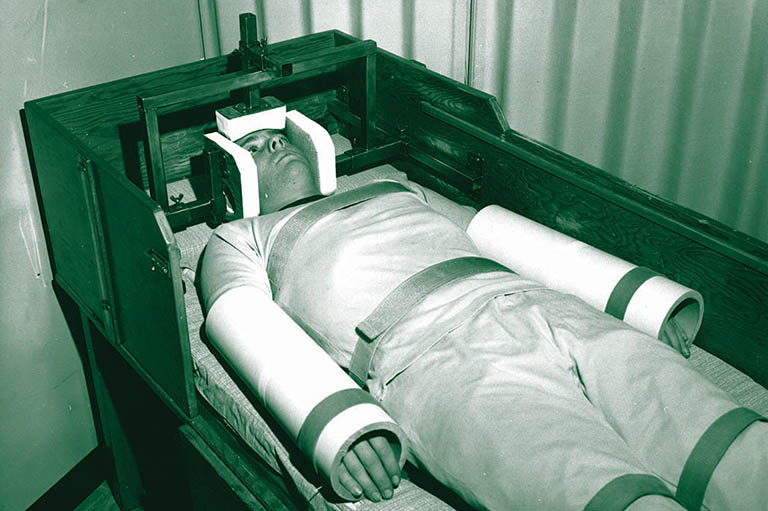
Declining interest
In 1969, Zubek edited a comprehensive book entitled Sensory Deprivation: Fifteen Years of Research, confirming his status as a leading authority on the subject. With new funding from the National Research Council in place, along with continuing Defence Research Board money, Zubek was arguably at the pinnacle of his career. But the climate had begun to shift.
In 1963, the CIA’s inspector general reviewed the MKUltra project and found serious ethical and legal problems. One of the directly funded projects involved Dr. Ewen Cameron of Montreal, who was secretly administering LSD to patients and engaging in psychic driving. Other covert operations were also judged to be questionable. While none of these criticisms were public at the time, they caused internal strife at the CIA. The agency suspended MKUltra, though further research continued under different forms and guises. But the flow of funds to researchers slowed, and this had its inevitable effect across the continent.
Departments of psychology in Canadian universities are now about to starve to death for lack of research support,” wrote Dr. C.R. Myers of the Defence Research Board in 1964. He said American and Allied defence support had been responsible for building up psychological research departments in postwar Canada. “There appears to be no other scientific discipline in Canada that is so dependent for research support on U.S. sources.”
By the end of the decade, Zubek was feeling the pressure. There was grumbling at the Defence Research Board that his research was not making any notable advances in knowledge and that its quality was questionable. By 1971, Zubek was pleading for continued support, arguing that his program uniquely required subjects to live in the lab for prolonged periods of time, which “adds considerably to the defence applicability of our results.” He managed to get extensions of his grants until March 1974, but no further prospects were on the horizon. For the first time since 1959, the research professor faced the prospect of having no research dollars.
Accusations of torture
Even more trouble was brewing for Zubek overseas. On August 9, 1971, Britain passed legislation allowing for internment without trial in Ulster. That morning at 4:30 a.m., police arrested 342 people. Twelve of the detainees were transferred to a special centre where they were subjected to in-depth interrogation. Among the techniques used to soften them up for questioning were hooding and loose-fitting boiler suits, bombardment with white noise, forced wallstanding, a bread-and-water diet, and sleep deprivation.
The techniques led to accusations of torture, triggering two official inquiries. The result of the second inquiry was known as the Parker Report of 1972. The appointed committee noted that similar interrogation measures had played an important part in counter-insurgency operations in Palestine, Malaya, Kenya, Cyprus, and other places. The majority report accepted the techniques in exceptional circumstances, but a minority opinion by Lord Gardiner said they were not morally justified. Referring to sensory isolation, Gardiner added: “There is a considerable bibliography of experiments in this field, particularly in Canada.”
That passing reference immediately caught the attention of Canadian reporters, who lost no time tracking down John Zubek for his reaction. “There have been statements that we are involved in brainwashing techniques, and that is not the case at all,” Zubek told the media. Zubek stressed that the research he was doing could be applied in many ways, including addressing the practical problems of northern living and confinement in such quarters as bomb shelters, submarines, spacecraft, and prisons.
Significantly, Zubek never denied that the British could well have used his research for interrogation purposes. “Results can be used for wrong purposes, and over this we as scientists have little or no control,” he said in an interview “To be realistic, these techniques for extracting vital information may have their place in certain situations such as times of war.” A CBC reporter asked him how he felt about people taking his principles and applying them to develop such things as brainwashing techniques. Zubek’s response: “I can say that in certain circumstances, for example during the war, that it would be extremely important to get certain types of information down there. There’s a time and place. What bothers me about the cases in Northern Ireland is that these are non-convicted individuals on whom these techniques have been employed.”
On campus, student activists denounced the use of university facilities and researchers for defence-related research. More than a hundred students attended a meeting in November 1972 to discuss the University of Manitoba’s connection to interrogation techniques used in Ulster. Zubek refused an invitation to attend, but he always patiently explained to interviewers that he felt his work involved basic research that wasn’t intended to further war-related aims. Peter Suedfeld, a close colleague and fellow sensory isolation researcher, felt the criticisms directed against Zubek were unfair, since he wasn’t even studying aspects of attitude change.
”He was very sensitive to how he was being treated,” Suedfeld said in an interview “It really upset him.” But as an avowed world authority on sensory isolation, Zubek was seen as a spokesman for all its aspects. The criticisms continued throughout 1973 as student groups never forgot the Ulster incident. Any time torture was raised as an issue, Zubek would get calls from media.
Zubek’s health began to suffer under the pressure of constant criticism and the potential loss of his research funds. Outwardly confident, demanding, and rigorous, he was notoriously thin-skinned when it came to conflict and criticism. Documents in his archives show that a 1961 interdepartmental spat with two other professors was forcing him “to consider seriously my departure from this university.” At the time, his doctor told him to take several months off.
He took on a haggard look and became withdrawn. He told one friend he thought his phone was being tapped. “We realized that he was in a very bad state and we tried to get him out of it,” Dr. Al Pressey, a close friend, said in 1981. “The lack of university support and demonstrations were a major factor that contributed to his depression.” Colleagues said he was taking heavy doses of antidepressants and was disoriented at times.
By the beginning of April 1974 his research dollars had vanished, and he never filed a final report for the Defence Research Board. On April 27, he resigned from the board of the Canadian Psychological Association, citing poor health. He disappeared during the evening of August 17 and was never seen alive again. Some of his colleagues thought he may have become disoriented and wandered into the river, while others believed it to be suicide.
What did he know?
How much did John Zubek know about who was funding him and how his research was used? No single piece of evidence links Zubek directly to the CIA, though the full list of researchers and institutions who were covertly funded has never been made public. Zubek received the bulk of his funds from the Defence Research Board, which freely shared all its information with British and American intelligence agencies. Omond Solandt, founding chairman of the board who served until 1957, said CIA representatives were “free to attend Defence Research Board staff and committee meetings where defence research programs were discussed.”
Zubek served as a member of its Human Resources Scientific Advisory Committee from 1958 to 1964. He was also chair of its Human Engineering and Psychophysiology subcommittee and knew that the board needed defence-related research. When the Ulster torture controversy erupted, Zubek was quick to point out that his work was merely basic research.
“The fact that these results may have been misused overseas, I seriously don’t think should affect the future support of this program,” he said. But in his 1986 review of Dr. Ewen Cameron’s psychic driving work, former Halifax MP George Cooper made the Defence Research Board’s mandate clear: “The DRB was not to conduct basic scientific research, but rather applied research.”
Through work on the board and in other forums, Zubek kept contact with Hebb, who originally created the sensory isolation field at the prompting of Anglo-American agencies. Though Hebb’s exact knowledge of CIA involvement has also been disputed, there is evidence he had several meetings with interested U.S. research agencies over the years and received a CIA security clearance as late as April 10, 1964.
Zubek dedicated his 1969 book to Hebb and associates, while Hebb wrote a heartfelt obituary of Zubek in the journal Canadian Psychologist, calling him the recognized authority in the field of sensory deprivation. Interestingly, when Zubek came under fire for his research, he stated that he was not directly involved in Hebb’s earliest work, even though handwritten notes in his archives clearly show that he was.
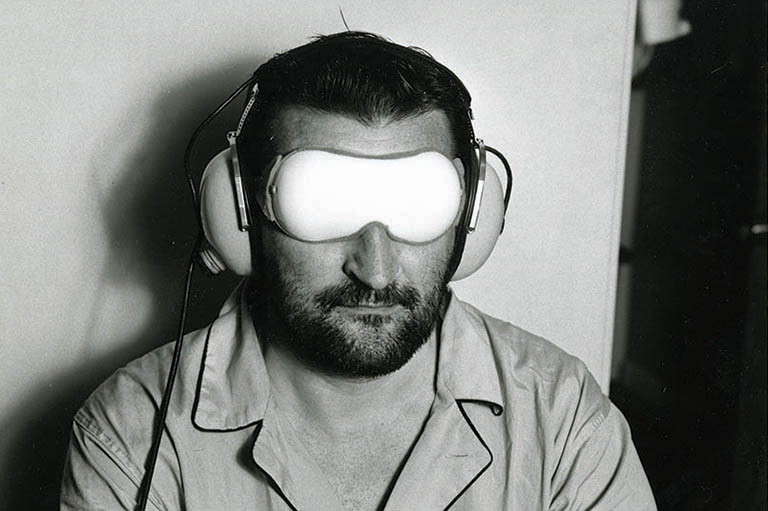
An entire contingent of psychologists, however, considers Zubek’s work to be ethical, and they reject any implication it might be connected with torture. Steven Kennedy, formerly with the American Psychological Association, argues that the Ulster interrogation methods were very different from sensory deprivation research, with the partial exception of continuous noise and masking of normal sight. He says it’s far-fetched to connect the techniques to sensory isolation research and says most of the abusive procedures used in interrogation have figured in the arsenal of jailers and torturers throughout history.
But that is not a universal view, even among interrogators. Detective Superintendent Colin Sturgeon of the Northern Ireland police service, in a visit to Harvard Law School in 2005, cited sensory deprivation as one of the techniques used in the region’s recent past. “Although these techniques proved quite successful in gaining intelligence, they also alienated a vast proportion of the population,” he said.
Recently released U.S. documents reveal the ongoing use of such techniques. A top-secret CIA report from 2004 says measures such as hooding, isolation, white noise, and cramped confinement “are designed to psychologically ‘dislocate’ the detainee, maximize his feeling of vulnerability and helplessness, and reduce or eliminate his will to resist our efforts to obtain critical information.”
The combination of fewer available research dollars and the controversies of the 1970s led to a widespread abandonment of sensory deprivation and isolation research. It was reborn somewhat later with a more palatable name: restricted environmental stimulation technique, or REST. It argues that people can actually benefit from the lessening or elimination of sensory stimulation, much in the same way they can by sleeping or resting in bed. Peter Suedfeld’s research in this area argues that it can also be an effective treatment in habit modification, such as getting people to stop smoking.
Sensory isolation’s modern legacy
For American historian Alfred McCoy, the infamous photo of a hooded Iraqi standing on a box with arms extended and wires attached to his hands in Abu Ghraib prison is a summary of U.S. research methods over the years. The hood is an outgrowth of sensory deprivation research, while the extended arms are a technique the CIA has developed to convince prisoners they are inflicting pain on themselves. Both are part of a “no-touch torture” paradigm that leaves no overt wounds or scars but can terrorize nonetheless and soften up inmates for questioning.
McCoy traces a clear historical path from the mind control experiments that began in the 1950s, to the KUBARK interrogation manual of 1963, to an updated Honduras interrogation training manual of 1983, to commander Ricardo Sanchez’s approval of specific techniques for interrogation in Iraq in 2003. All of these included, among other measures, isolation.
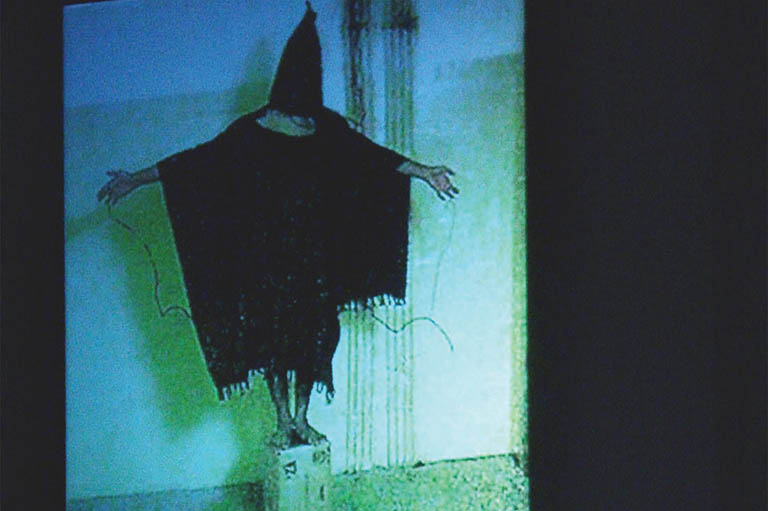
Nor is Canada oblivious to such measures. In a declassified memo from the Department of Foreign Affairs, a narrative is provided of the techniques used to prepare prisoner Omar Khadr for a visit with Canadian representative Jim Gould in Guantanamo Bay naval station in 2004:
In an effort to make him more amenable and willing to talk, (name deleted) has placed Umar on the ‘frequent flyer program’ for the three weeks before Mr. Gould’s visit. Umar has not been permitted more than three hours in any one location. At three-hour intervals he is moved to another cell block, thus denying him uninterrupted sleep and a continued change of neighbours. He will soon be placed in isolation for up to three weeks and then he will be interviewed again.
In the end, when confronted by the possibility that his research was being applied to prisoner interrogation, John Zubek threw up his hands and said he couldn’t be held responsible. It’s a view shared by many other academics who feel they can’t be choosy when deciding to accept scarce research dollars.
But cognitive expert Timothy Shallice has a different view. In the wake of the Ulster interrogation scandal in 1972, he wrote: “In the present social system of research, research workers do not have to provide any public and debatable justification of the likely social consequences of their work.” While the Ulster methods were produced by a conscious use of available scientific knowledge, he added: “Not surprisingly, psychologists, by investigating the nature of brainwashing, have improved it.”
Shallice provided an amazingly prescient analysis of how the future might unfold: “As the lack of clearly visible after-effects makes allegations of the use of such techniques much more difficult to substantiate than for physical tortures, there may well be an increasing use of such techniques in the future.”
The sensory deprivation laboratory at the University of Manitoba was never used after Zubek’s death. The research came to an abrupt end. But the legacy of that research survives, in ways that John Zubek might never have imagined.
Themes associated with this article
You might also like...

Canada’s History Archive, featuring The Beaver, is now available for your browsing and searching pleasure!


